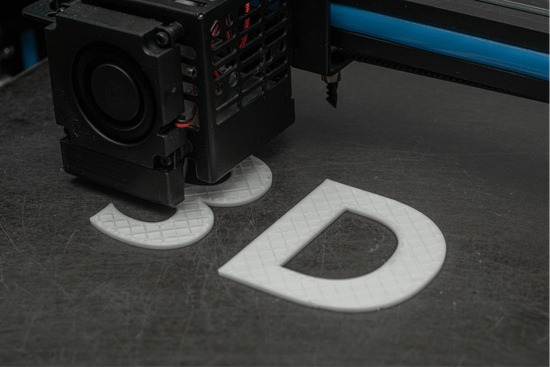
Properties and Overview of PLA (Polylactic Acid)
Overview:
 PLA (Polylactic Acid) is a biodegradable thermoplastic polymer made from renewable resources such as corn starch, sugarcane, or other plant-based materials. Known for its eco-friendly properties and versatility, PLA has gained widespread popularity as a sustainable alternative to traditional petroleum-based plastics. Its low environmental impact, ease of processing, and adaptability make it a key material in the packaging, medical, and 3D printing industries.
PLA (Polylactic Acid) is a biodegradable thermoplastic polymer made from renewable resources such as corn starch, sugarcane, or other plant-based materials. Known for its eco-friendly properties and versatility, PLA has gained widespread popularity as a sustainable alternative to traditional petroleum-based plastics. Its low environmental impact, ease of processing, and adaptability make it a key material in the packaging, medical, and 3D printing industries.
Production:
The production of PLA involves several steps, starting with the fermentation of plant-derived sugars to produce lactic acid. This lactic acid is then polymerized through condensation or ring-opening processes to form polylactic acid. PLA can be tailored to meet specific application needs by varying its molecular weight or blending it with other materials. It is compatible with various manufacturing techniques, including injection molding, extrusion, thermoforming, and 3D printing, which allows for the creation of complex and functional components.
Applications:
PLA's applications are diverse due to its unique properties. In the packaging industry, PLA is used to produce compostable food containers, cups, and films, offering an environmentally friendly alternative to conventional plastics. The medical field utilizes PLA for biodegradable sutures, implants, and drug delivery systems, as its biocompatibility ensures safe interaction with the human body. In the rapidly growing field of 3D printing, PLA is one of the most commonly used materials, appreciated for its ease of use, low melting temperature, and minimal environmental footprint. Additionally, PLA is found in disposable tableware, agricultural films, and textiles, showcasing its versatility across consumer and industrial markets.
Summary:
Polylactic Acid is a groundbreaking polymer that combines sustainability with performance. Its biodegradability and reliance on renewable resources position it as a critical material in addressing environmental challenges posed by traditional plastics. As industries prioritize eco-friendly solutions, PLA remains a cornerstone of sustainable innovation, driving packaging, healthcare, and manufacturing advancements. With ongoing research and development, PLA's potential for broader applications ensures its continued relevance in shaping a greener future.
See a comprehensive list of electrical, mechanical, physical and thermal properties for PLA (Polylactic Acid) below:
Electrical Properties of PLA (Polylactic Acid)
| Electrical Property (Units) | Value |
|---|---|
| PLA (Polylactic Acid) Dielectric Constant at 'Standard Temperature and Pressure' | 2.7 to 3.0 |
| PLA (Polylactic Acid) Electrical Breakdown Voltage at Atmospheric Pressure (kV/mm) | ~20 to 30 |
| PLA (Polylactic Acid) Electrical Conductivity (S/m) | 1.00E-16 to 1.00E-13 |
| PLA (Polylactic Acid) Electrical Resistivity at Room Temperature (25°C) (Ω·m) | 1.00E+13 to 1.00E+16 |
| PLA (Polylactic Acid) Magnetic Property | N/A |
| PLA (Polylactic Acid) Superconducting Transition Temperature (K) | N/A |
| PLA (Polylactic Acid) Temperature Coefficient of Resistance (°C⁻¹) | Unknown |
Unfamiliar with a property? Click it's description to be given a full definition in the GLOSSARY
See properties and overview for
ALLOYS and CHEMICAL ELEMENTS
popular in engineering
Require different units not displayed?
CONVERT VARIOUS UNITS HERE
Mechanical Properties of PLA (Polylactic Acid)
Unfamiliar with a property? Click it's description to be given a full definition in the GLOSSARY
See properties and overview for
ALLOYS and CHEMICAL ELEMENTS
popular in engineering
Require different units not displayed?
CONVERT VARIOUS UNITS HERE
Physical Properties of PLA (Polylactic Acid)
| Physical Property (Units) | Value |
|---|---|
| PLA (Polylactic Acid) Boiling Point at Atmospheric Pressure (°C) | Decomposes |
| PLA (Polylactic Acid) Chemical Composition (Element %) | (C3H4O2)n |
| PLA (Polylactic Acid) Cost ($/kg) | 2 to 4 |
| PLA (Polylactic Acid) Density at 'Standard Temperature and Pressure' (kg/m3) | 1250 to 1290 |
| PLA (Polylactic Acid) Glass Transition Temperature at Atmospheric Pressure (°C) | 50 to 60 |
| PLA (Polylactic Acid) Melting Point at Atmospheric Pressure (°C) | 150 to 180 |
| PLA (Polylactic Acid) Polymer Family | Thermoplastic |
| PLA (Polylactic Acid) Refractive Index | 1.35 to 1.46 |
| PLA (Polylactic Acid) Specific Gravity | 1.25 to 1.29 |
| PLA (Polylactic Acid) Viscosity at Melting Point (mPa·s) | Unknown |
Unfamiliar with a property? Click it's description to be given a full definition in the GLOSSARY
See properties and overview for
ALLOYS and CHEMICAL ELEMENTS
popular in engineering
Require different units not displayed?
CONVERT VARIOUS UNITS HERE
Thermal Properties of PLA (Polylactic Acid)
| Thermal Property (Units) | Value |
|---|---|
| PLA (Polylactic Acid) Coefficient of Thermal Expansion (µm/m·K) | 50 to 100 |
| PLA (Polylactic Acid) Emissivity Coefficient | ~0.95 |
| PLA (Polylactic Acid) Specific Heat Capacity (J/kg·K) | 1800 to 2000 |
| PLA (Polylactic Acid) Thermal Conductivity (W/m.K) | 0.14 |
| PLA (Polylactic Acid) Thermal Conductivity (BTU/h·ft·°F) | 0.08 |
Unfamiliar with a property? Click it's description to be given a full definition in the GLOSSARY
See properties and overview for
ALLOYS and CHEMICAL ELEMENTS
popular in engineering
Require different units not displayed?
CONVERT VARIOUS UNITS HERE
 ADDED TO MY FAVORITES!
ADDED TO MY FAVORITES! REMOVED FROM MY FAVORITES!
REMOVED FROM MY FAVORITES!